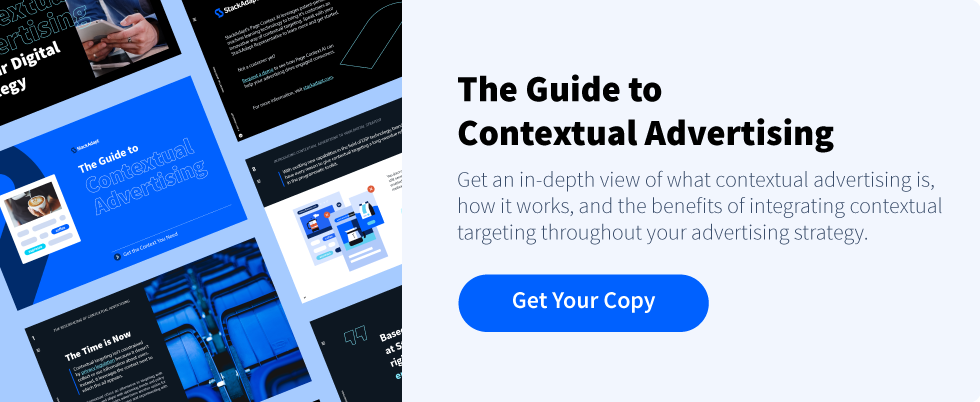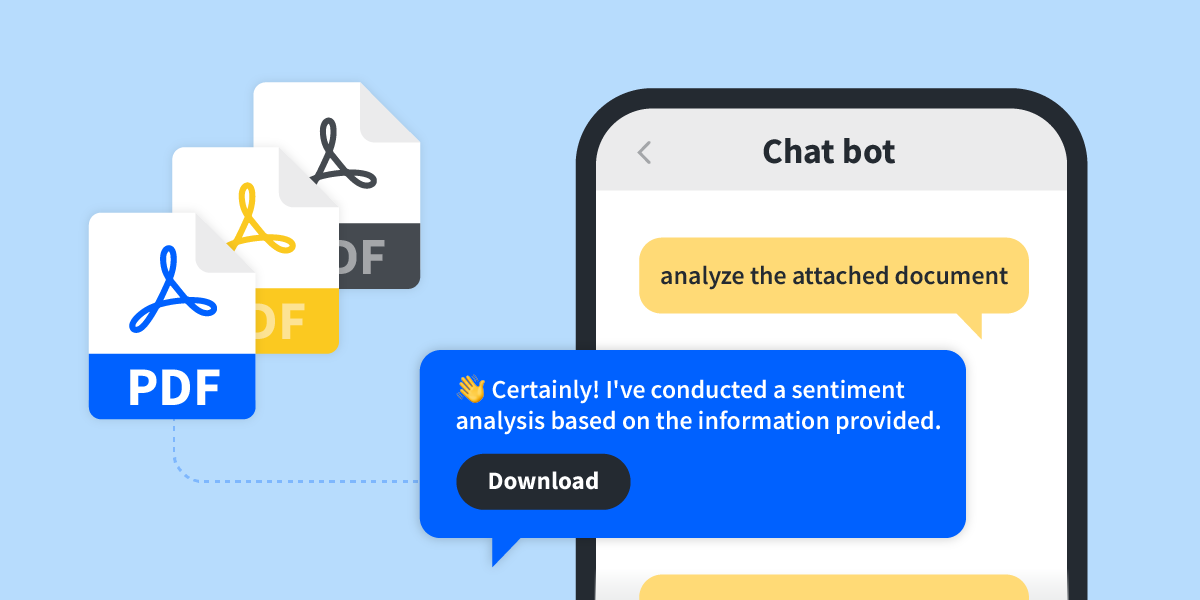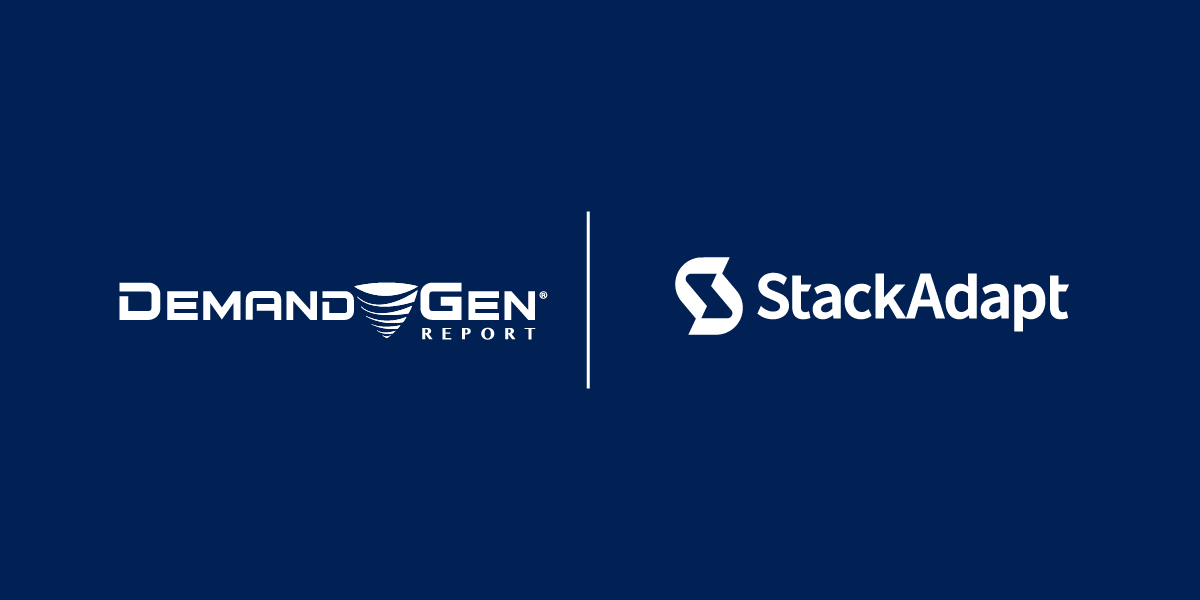Today’s advertising landscape is seeing growing restrictions on 3rd-party data collection, which is spurring increased interest in cookieless targeting. Cookieless advertising (also known as contextual advertising) isn’t constrained by privacy legislation because it doesn’t collect or use information about users. Instead, it leverages the context next to which the ad appears.
Thanks to current technology, contextual is multi-channel and scalable, making it a reliable means for reaching your audience. Plus, it provides advertisers another option for diversifying methodologies and experimenting with new marketing strategies. That’s a targeting method you can sink your teeth into. Read on to learn what cookieless targeting is, how it differs from behavioural targeting, and the benefits of cookieless advertising.
What is Cookieless Targeting
Cookieless advertising targets ads based on the environment in which an ad appears. It uses algorithms to target ad placements based on keywords, website content, and other metadata. This way, ads are shown to users based on the content they are consuming at that moment in time. Modern cookieless targeting leverages machine learning and artificial intelligence (AI), which has made this targeting method more effective than ever before.
Understanding cookies.
What are cookies? A cookie, also called web cookie, internet cookie, or browser cookie, is a small piece of data sent from a website and stored on the user’s computer by the web browser. This small, unique identifier enables a website to remember a user as well as their actions as they browse.
Cookies are what makes tracking in-browser user behaviour a valuable tool for targeting digital ads toward receptive consumers. Cookieless advertising offers an alternative to this targeting solution.
Behavioural vs. Contextual Targeting
Behavioural targeting, often referred to as audience targeting, aims to ensure that an ad is relevant to the user who is visiting a page. This is done by serving ads based on a user’s web-browsing behaviour. User data is collected from various sources, and typically to collect this data you need some sort of user identifier, like a pixel or cookie.
Rather than targeting ads based on user behaviour, contextual advertising targets ads based on the environment in which the ad appears. The key difference between contextual and behavioural advertising is that behavioural targeting aims to identify the ideal user based on the attributes they exhibit, while contextual advertising targets users based on the content they are consuming at that time.
For example, behavioural will assume a user likes shoes because they have been identified as a shoe lover, based on their previous web activity. Whereas with contextual targeting, a user has indicated an interest in shoes because they are actually looking at content about shoes at that very moment.
The Benefits of Cookieless Targeting
Cookieless targeting offers marketers an opportunity to experiment and innovate their targeting strategies. By adding this strategy to their marketing mix now, advertisers can elevate their results.
Here are 4 key benefits of cookieless targeting:
1. Reach Users in the Right Frame of Mind
2. Target Niche Audiences
3. Utilize Real-Time Metrics
4. Brand Safe and Build Brand Affinity
Cookieless Targeting Reaches Users in the Right Frame of Mind
When a person is browsing content about a specific topic, it signals their intent at that moment. For example, if a user is reading a blog about coffee, they are in a receptive frame of mind when it comes to content and ads related to coffee.
With cookieless targeting, that user could be served ads for coffee beans or coffee makers, as it’s likely at that time the user is thinking about coffee-related products. A person’s content consumption signals intent at a specific moment in time, and with cookieless targeting, you can reach them in that moment.
Cookieless Advertising Helps You Target Niche Audiences
Contextual advertising also provides the opportunity for marketers to target niche contexts by specifying a topic or a collection of keywords. For example, a marketer who is running a campaign for a mascara product may want to create value alignment between users and the mascara by highlighting that the mascara is vegan.
Cookieless targeting would enable them to indicate keywords related to vegan makeup to precisely target a niche customer profile. This strategy is effective because it ensures your ads are served to consumers who are receptive to the niche attributes of a product or service.
Cookieless Targeting Provides Real-Time Metrics
Since contextual advertising campaigns are served programmatically, you can review real-time metrics and optimize for maximum performance. With the right programmatic platform, you can verify your ads served on relevant domains pre- and in-flight. This gives you the ability to revise your selected topics and keywords in real-time to improve the performance of your campaigns.
Optimizing your campaigns in real-time strengthens your live campaign’s performance which ultimately improves the outcome. And, being able to make in-flight changes means you’re able to make adjustments that will reduce any ad dollar waste.
Cookieless Advertising is Brand Safe and Builds Brand Affinity
Now more than ever, consumers care about where they shop, and they are increasingly conscious of the environments where brands choose to advertise. Contextual advertising addresses the need for brand safe advertising while also building brand affinity, by leveraging content rather than user data to reach the right audience. You’re able to connect with consumers who are receptive to purpose-driven messaging, and looking specifically for brands that align with specific values.
For example, a consumer who is interested in reducing their environmental impact will likely browse online for content that provides insights on sustainable living. With contextual targeting, a brand that is promoting their zero-waste products can target the keyphrase “sustainable lifestyle,” to appear next to content that covers related topics. This strategy ensures that the brand is reaching consumers who will align with the brand’s values.
Cookieless Tactics Do Not Mean a Cookieless Future
Is the future of advertising really cookieless? No!
There are a number of digital environments where cookies will continue to exist, acting as identifiers for those who engage with the content and web pages. Aside from instances where a user would accept the cookie notice that they are prompted to respond to on web pages, there are many scenarios where a user would willingly provide their information. This could be in a payment portal, or when providing an email address to download content or access additional information.
What will change is the number of digital environments where cookies are accepted and tracked. For example, some browsers like Apple Safari offer options for users to manage cookies and website data. A user now has the option to block all cookies while using that browser. We are moving toward a digital future that is increasingly cookie-limited, but will not be cookieless. That is why cookieless targeting methods are so critical—they keep your digital strategy from crumbling.
Example of Contextual Advertising
Cookieless targeting is especially helpful for marketers in sensitive categories, like pharmaceuticals. This is because behavioural targeting for this industry can be considered as too invasive of user privacy, and in some regions it’s prohibited by law.
With a contextual campaign, products and services in sensitive categories can drive awareness by identifying the phrases and keywords that are most appropriate to target. For example, to drive awareness for a drug rehabilitation center, a marketer would target in context phrases like “addiction,” “counselling,” “mental support,” and “recovery.”
Marketers can also identify out of context phrases, eliminating those phrases within the campaign targeting methodology. So an awareness campaign for that same drug rehabilitation center would want to use out of context phrases to avoid placements such as stories about celebrities and gossip sites.
Thanks to the in context and out of context indicated phrases, ads are then served on highly targeted websites, such as blogs that offer tips on “how to get started with rehabilitation.” With this strategy, the drug rehabilitation center’s cookieless advertising campaign can successfully target users with intent, and without the use of any private user information.
Introducing Contextual Advertising to Your Digital Strategy
Contextual advertising departs from the traditional behavioural approach of making sure ads are relevant to a user. Instead, a contextual targeting approach aims to ensure the ad is relevant to the content of that page. And as the advertising industry continues to move toward a cookieless world, the role of contextual will continue to grow. With this, comes plenty of new opportunities! So don’t wait, take a bite of cookieless targeting, and get started now.






